- Log in
-
- Sydney Overseas Office
- London Overseas Office
- Toronto Overseas Office
- Los Angeles Overseas Office
- New York Overseas Office
- Ulaanbaatar Overseas Office
- Istanbul Overseas Office
- Dubai Overseas Office
- New Delhi Overseas Office
- Manila Overseas Office
- Jakarta Overseas Office
- Hanoi Overseas Office
- Kuala Lumpur Overseas Office
- Singapore Overseas Office
- Bangkok Overseas Office
- Map
- Sydney Overseas Office
- London Overseas Office
- Toronto Overseas Office
- Los Angeles Overseas Office
- New York Overseas Office
- Ulaanbaatar Overseas Office
- Istanbul Overseas Office
- Dubai Overseas Office
- New Delhi Overseas Office
- Manila Overseas Office
- Jakarta Overseas Office
- Hanoi Overseas Office
- Kuala Lumpur Overseas Office
- Singapore Overseas Office
- Bangkok Overseas Office
About Korean Food
-
-
-
Kimchi
-
5.9K
1
1
-
-
food
Korean_food_experience
kimchi
Korean_cuisine
Young_Summer_Radish_Kimchi
Leaf_mustard_kimchi
green_onion_kimchi
-
-
Kimchi, Anywhere Anytime
Kimchi, a fermented vegetable dish, is a Korean traditional dish that accompanies every meal in Korea. It is made with various vegetables including cabbage, radish and cucumber, and there are many different variations in cooking methods and types. As kimchi’s efficacy in health has been scientifically proven, the interest in Korean food is also rising around the world.
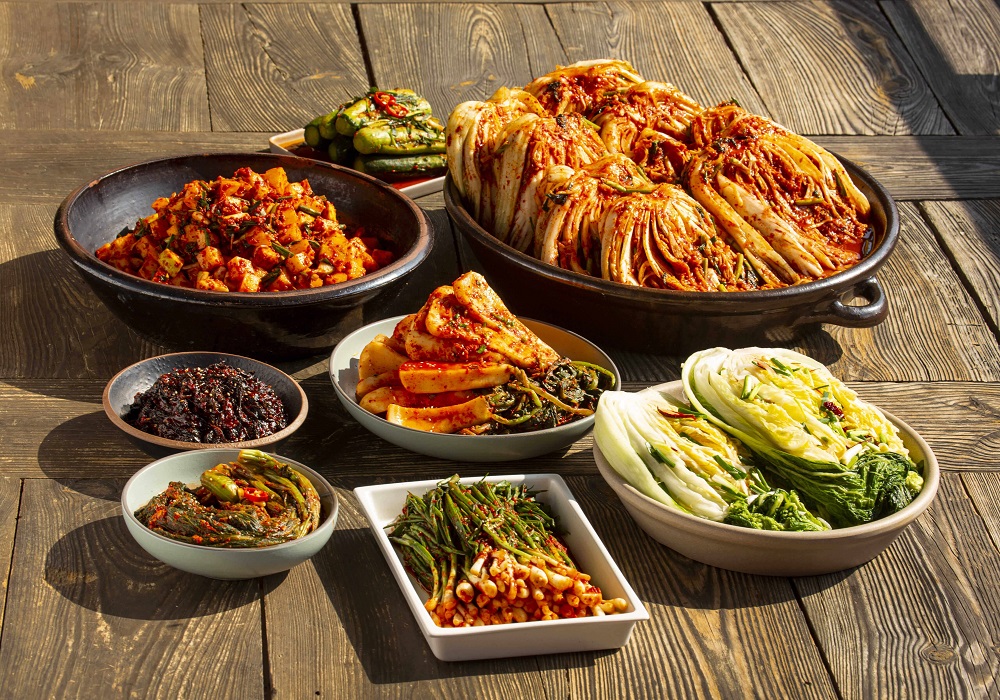
Origin of kimchi
Kimchi was originally made as a way to preserve vegetables through the winter. It was first simply made with salted cabbage but, thanks to the addition of red pepper powder and many other sauces and seasonings, it has slowly evolved into the kimchi we know today.
Nutrition of kimchi
Because of its high traditional values and many advantages in health, kimchi was chosen as one of the world's five healthiest foods by “Health,” an American health magazine. The fermentation process of kimchi generates lactobacillus, a type of bacteria that aids in digestion and eradicates harmful bacteria. Kimchi also strengthens the immune system and helps prevent the growth of cancer.
Types of kimchi
Over 100 different kinds of kimchi exist according to region, climate, and other environmental conditions. Some of the more notable types of kimchi include cabbage kimchi, diced radish kimchi, water kimchi, and cucumber kimchi.
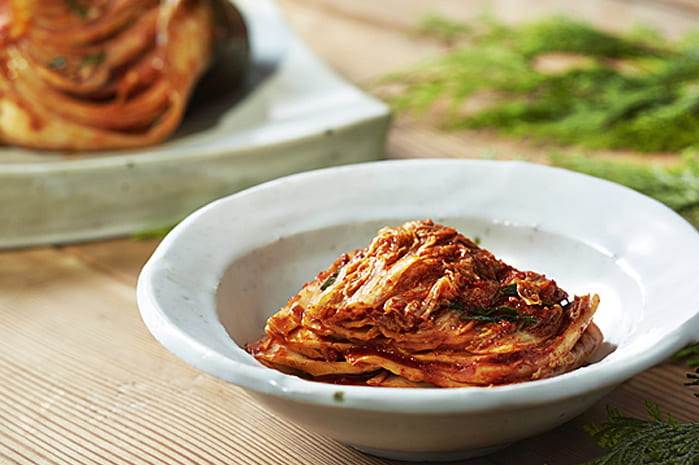
1) Baechu kimchi (Cabbage kimchi): The most typical and popular consumed type of kimchi by Koreans. It is made by preserving cabbage in salt and mixing it with various seasonings such as red pepper powder, garlic, and fish sauce before fermentation.
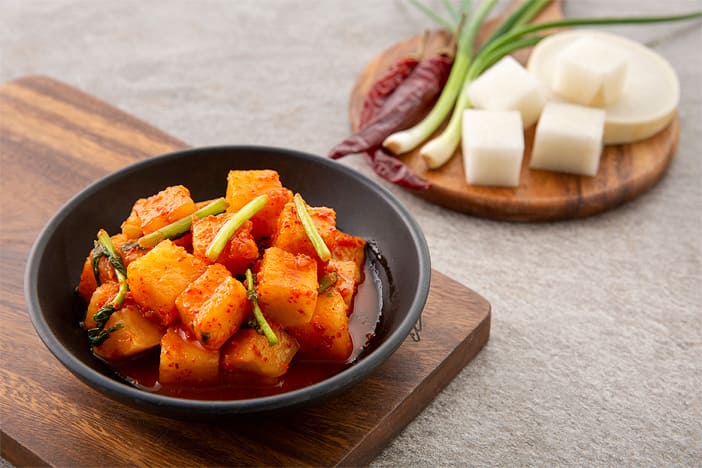
2) Kkakdugi (Diced radish kimchi): This kimchi using radish is famous for its crunchy texture and sweet taste. It especially goes well with soups and stews.
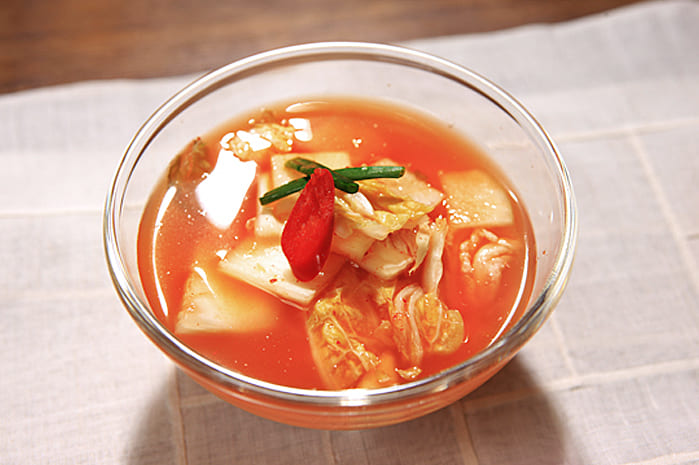
3) Nabak kimchi (Water kimchi): Also known as water kimchi, it is not spicy and contains a lot of water, which is why it offers a cool taste. The word, nabak, stems from the shape of the ingredient and the way of cutting vegetables in thin rectangular shapes is called “nabak cutting.”

4) Oi sobagi (Cucumber kimchi): A type of kimchi made by inserting stuffing in cucumbers often enjoyed in spring and summer.
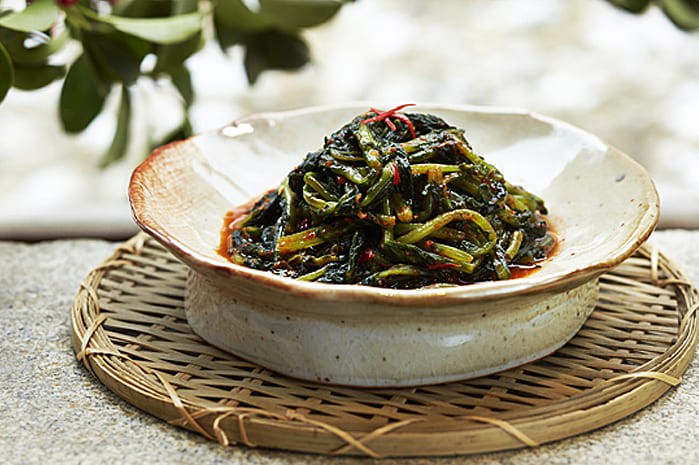
5) Yeolmu kimchi (Young summer radish kimchi): Yeolmu, which means “young summer radish” in Korean, is made with small but piquant-tasting roots and abundant turnips, resulting in a unique kimchi dish. It is a summer delicacy whose cool flavors help stimulate the appetite.
Dishes utilizing kimchi
Kimchi jjigae: A dish that boils kimchi and pork together. This dish is considered one of the most popular soup dishes that Koreans love the most. Instead of pork, you can add tuna, ham, and/or ramen noodles.
Kimchi pancake: A dish that adds kimchi to dough and is fried in oil until it becomes crispy. You can also add pork or seafood such as squid. It is also popularly enjoyed as a single dish
Unique kimchi dishes: There are countless unique kimchi dishes that you can only try in Korea, from “kimchi pizza tangsuyuk” that adds kimchi to pizza cheese and deep-fried pork with sweet and sour sauce to spicy “kimchi hotdogs” featuring minced kimchi inside a sausage.
This page was last updated on March 24, 2023, and therefore information may differ from what is presented here.1330 Korea Travel Hotline: +82-2-1330 (Korean, English, Japanese, Chinese, Russian, Vietnamese, Thai, Malay)





